In a world where the rate of global consumption is increasing dramatically, it’s imperative that we strive for economically efficient strategies to conserve energy. Individuals and companies alike shouldn’t have to involve a lot of money in changing lives for the better. Instead of looking at energy-saving tips at a household level, let’s shift our focus to ancient conservation strategies embedded in architecture around the world.
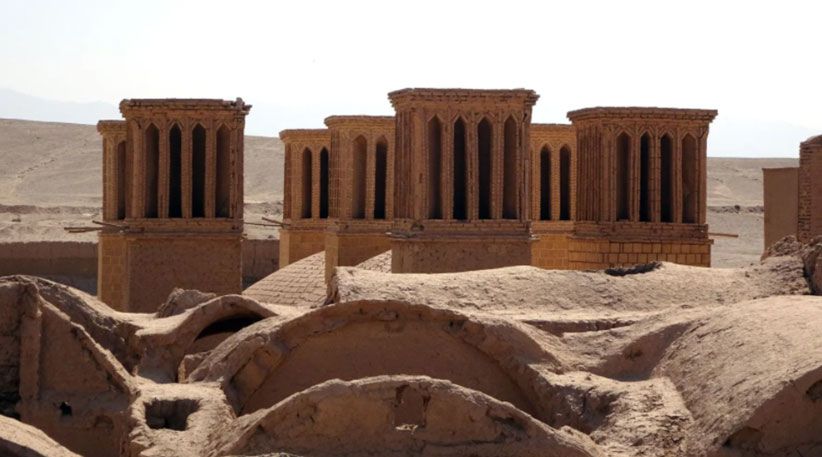
Sometimes art is the answer. At least, that’s what countless cities like Masdar City, Dubai’s Al Fahidi Historical neighbourhood, and others along the United Arab Emirates strive toward by investing in green cities through sustainable architecture. One particularly notable feature is Arabian wind towers.
Wind towers, also known as windcatchers, baadgir in Persian, and barajeel and burj-al-hawwa in Arabic, are towers that harness hot air and cool breezes for natural cooling and indoor ventilation. Although the concept was first brought to the Gulf regions in the 1900s, wind towers have been a traditional architectural feat since the 14th century. They are used mostly in Iran, North Africa and the Middle Eastern and West Asian regions.
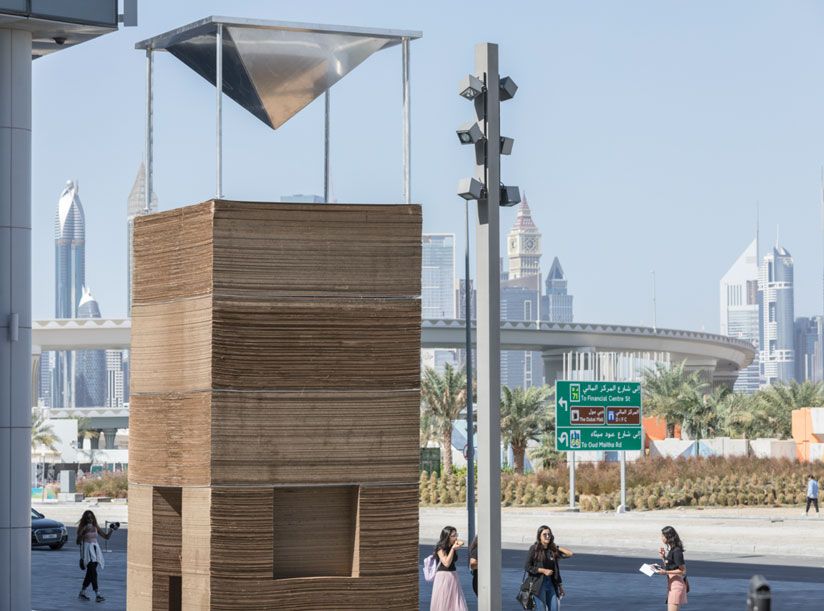
The towns in deserts are densely packed with high ceilings for more shade at ground level, built for hot, dusty and dry climates. Wind towers are built to increase ventilation through various cooling methods, such as air/wind pressure, evaporative cooling, underground and soil temperature, and thermal masses from materials like stone and brick. They have three main functions: to cool incoming wind for ventilation, to cool indoor air through water and evaporation, and to act as a thermal chimney. To achieve this, they use passive cooling, a design approach that controls and prevents heat in homes, masajid (mosques) and other buildings without consuming too much energy.
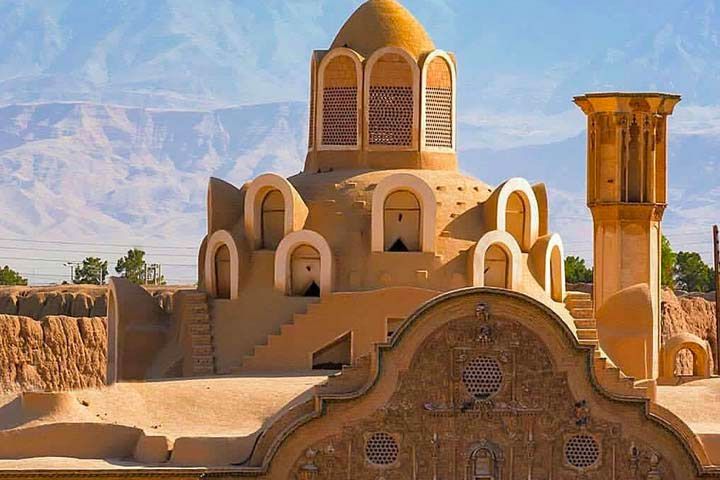
They come in various designs—either unidirectional, bidirectional or multidirectional—but have a standard square base tower. Sometimes wind towers have wooden bars to drape wet clothing onto, where the incoming wind would cool as it blows into the tower. The structure is made of clay, wood or bricks and is usually constructed on the roofs of buildings to “catch” cool breezes and external hot air. Its main function is simple: it catches wind where hot air rises and cool air descends inside the tower. A 2015 study showed that houses are almost 15℃ cooler compared to outside temperatures.
The directional openings direct cool winds by keeping the shaft against the wind open. The cool air descends and circulates, and then the warm air rises and escapes. In areas without wind, the towers also function as a thermal chimney by creating a pressure gradient and letting the dense warm air escape upwards. The wind tower regulates the internal temperature of the building continuously, without using any electrical devices. This simple circulation feature clearly echoes the Affordable and Clean Energy and Responsible Consumption and Production goals for the United Nations Sustainable Development Goals.
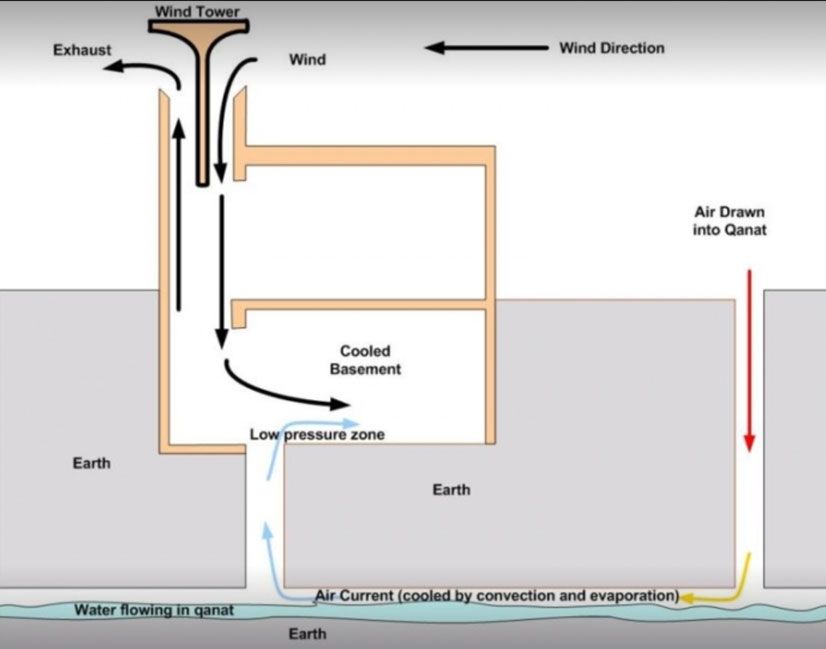
In hot, arid regions like Iran, water managing systems are included to help cool incoming air. A qanat (or canal) is an underground channel that supplies water for households and has separate access shafts for air to be drawn in. The qanat is completely protected from the sun and traps the cool air within by convection and evaporation. The wind tower, after cooling the wind, sucks the cool air in from the qanat upward through the building. The air from the qanat evaporates its water and becomes cooler, thus providing relief to the residents.
“With the help of these technologies and [their] modern designs,” says a 2022 paper on windcatchers in contemporary architecture, “windcatchers are compatible with a new form of life and play an essential role in sustainable architecture and decreasing cooling load, especially in hot and dry climates.”
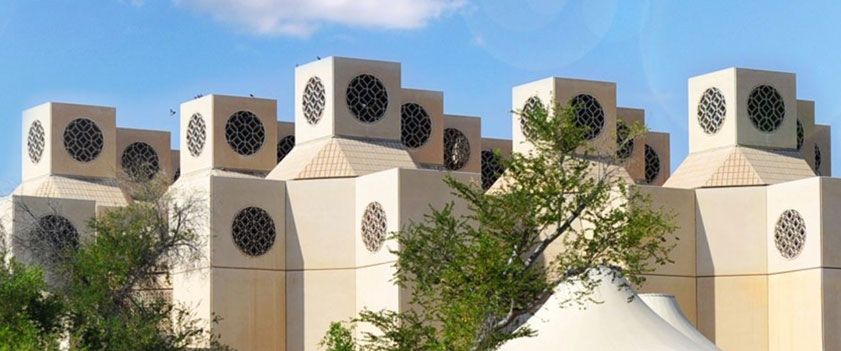
The wind tower is a better alternative to regular air conditioning vents, and the cost of constructing one is much lower.
The technique to preserve energy is originally Arabian, but it has inspired the Zion National Park in Utah, USA, Saint-Étienne Métropole's Zenith in France and the Council House 2 in Australia to preserve energy.
Wind towers are an ancient architectural form with sustainable, cultural and aesthetic appeal that is a great model for sustainable solutions. This model to conserve energy through brilliant engineering is seen in the United Nations Sustainable Development Goal for Sustainable Cities and Communities.
To learn more about the ancient genius of Arabian windcatchers, take a look at this BBC article.
